a legacy of iconic coachbuilding
For over a century, Zagato Atelier has been synonymous with the art of coachbuilding, crafting some of the world’s most coveted collectible cars. Established in 1919 by Ugo Zagato, the company quickly distinguished itself by merging principles of aeronautics with coachbuilding (the design and manufacture of horse-drawn carriage bodywork), and soon automotive design. This fusion ultimately informed its unique aesthetic language. Unlike mass-market manufacturers, Zagato has always focused exclusively on custom-made, limited-edition vehicles that have become prized collectibles. Today, the brand is led by third-generation Andrea Zagato, alongside his wife, Marella Rivolta Zagato, granddaughter of ISO Rivolta founder Renzo Rivolta.
As the atelier expands its reach, the upcoming launch of new offices in the United States and the United Kingdom marks a significant milestone. Andrea Zagato explains in the following interview with designboom, ‘We are not an automotive maker; we are a coachbuilder. Our cars are items for collectors, rather than consumables.’ The decision to open up more spaces reflects a desire to engage directly with collectors, offering new gateways into the history and artistry behind each Zagato creation. Marella Rivolta Zagato adds, ‘We sell works of art, unique pieces… Our cars are made of design, of ideas, of passion, and of a story.’
Zagato Atelier in Milan, image courtesy Zagato (unless otherwise stated)
the future of rare, exclusive, and timeless design
As they look toward the future, Andrea and Marella Zagato continue to embrace their legacy while adapting to an evolving automotive landscape. In a world increasingly defined by digitalization and electric vehicles, the studio‘s focus on aesthetic purity and craftsmanship remains a point of distinction. ‘We work not for addition, but for subtraction,’ Andrea explains, emphasizing the timelessness of their design philosophy, rooted in simplicity and functionality. As the brand continues to evolve, its expansion promises to bring more collectors into the fold, deepening its connection to the art of coachbuilding.
In an interview with designboom, Andrea Zagato and Marella Rivolta Zagato discuss their approach to coachbuilding, the significance of preserving tradition in an evolving automotive industry, and their plans to expand the atelier’s presence to engage collectors on a more personal level.
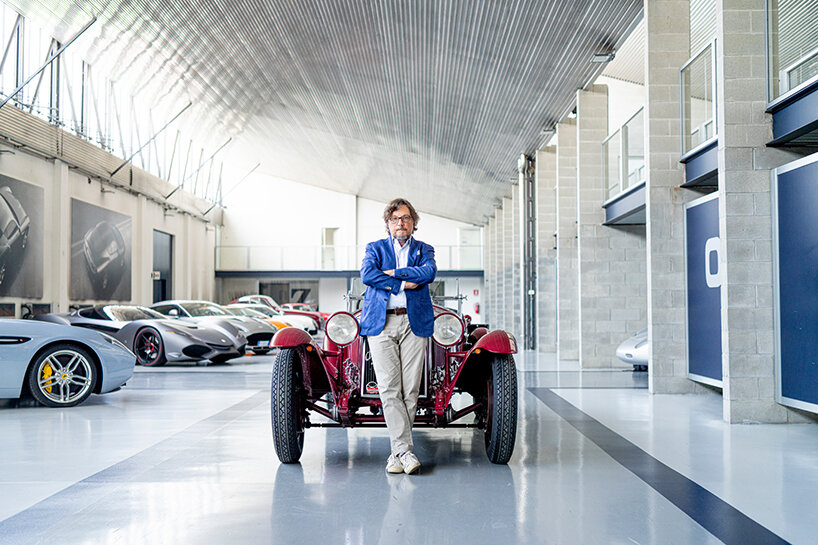 Andrea Zagato, grandson of Zagato Atelier founder Ugo Zagato
Andrea Zagato, grandson of Zagato Atelier founder Ugo Zagato
interview with marella rivolta zagato & Andrea zagato
designboom (DB): Might you begin by describing the origins of Zagato, and how it operates today?
Andrea Zagato (AZ): The key point is that we are not an automotive maker, we are a coachbuilder. We established the company in 1919, as a coachbuilding company for automobiles and airplanes. While automotive design is 120 years old, coachbuilding is, in Europe, a 500 year-old activity. It started with horse carriages. The difference between all the other coachbuilders is that Zagato started with airplanes, and we transferred the technology of the airplane into coachbuilding and cars. If you want to visualize our language, you have to blend a whole chariot — without the horse — and an airplane. It’s a unique reality in the coach building panorama.
Zagato is also different from other coachbuilders or car designers because in 105 years, we never build a larger series of cars, only custom-made, limited edition series. Our cars are items for collectors, rather than consumables. These are the three milestones about the history of the company: It’s a coachbuilding company, we uniquely mix the language of chariot building with airplanes, and we only concentrate on limited edition series which results in our cars becoming collectible items.
Marella Rivolta Zagato (MRZ): It’s a very old and specialized trade. We are like architects of the cars. We’re not car producers. We mostly look at the design, at the lines, at the setting. Many clients that love Zagato, the ones who know us more, they know this. But the ones who don’t know us say, ‘What is the engine? What is the car?‘ That’s the donor car. We are the ones who dress the cars. We are architects of cars, not car producers.
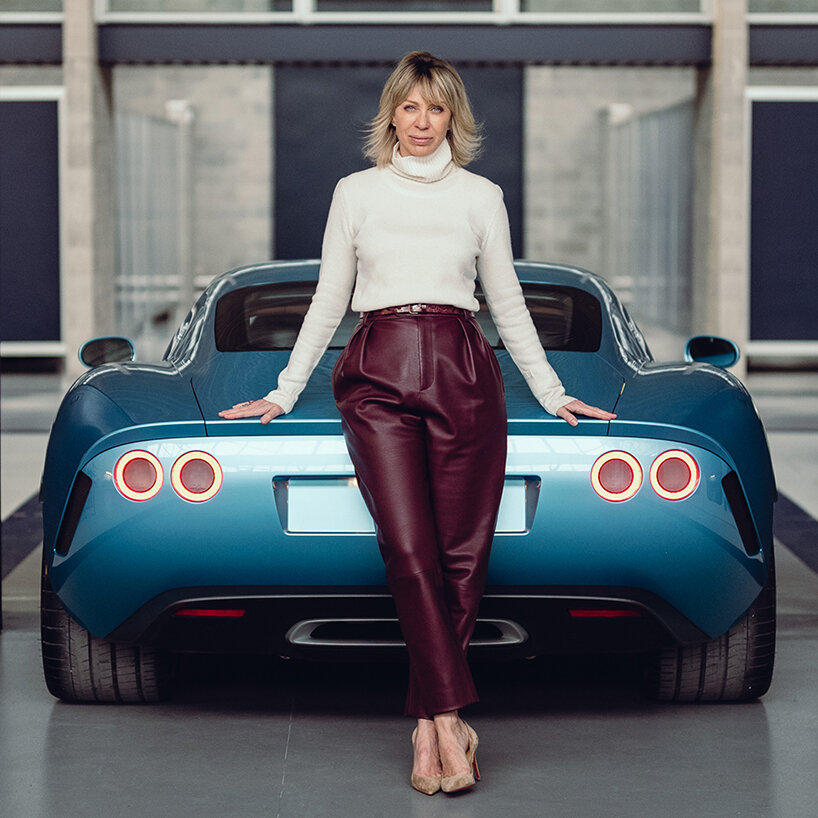 Marella Rivolta Zagato, granddaughter of ISO Rivolta founder Renzo Rivolta
Marella Rivolta Zagato, granddaughter of ISO Rivolta founder Renzo Rivolta
DB: What are the characteristics of a Zagato-designed vehicle?
AZ: The language of our design was always connected to its aeronautical origins. If you work on airplanes, you detach everything that is not necessary because the airplane has to fly. So you don’t add ornaments to an airplane, because this makes the airplane heavier. In design, this idea is called ‘functionalism,’ or ‘rationalism.’ We work not for addition, but for subtraction. We take away, rather than add. While most coachbuilders add elements to the design, we take off everything that is not necessary.
MRZ: Purity is most important. We try to enhance the volume of the product and try to make it as simple and functional as possible without ornaments. Then it lasts over time. There are some famous traits of Zagato, like the double bubbles on the roof, which are functional elements. For racing, cars are designed lower to make the air flow. These elements were born because the pilot has to fit inside with the helmet. But at the same time you don’t want to make the car too high or too bulky because it wouldn’t be as good in performance.
DB: So it’s a form to follow the function.
AZ: Exactly. In Milano we call it ‘essential beauty,’ bellezza necessaria. The idea also was supported by Enzo Ferrari. Ferrari was our best client in the first two decades. He said, ‘The car that wins the race is the most beautiful car.’ You lose the race, the car is not good looking. (laughing)
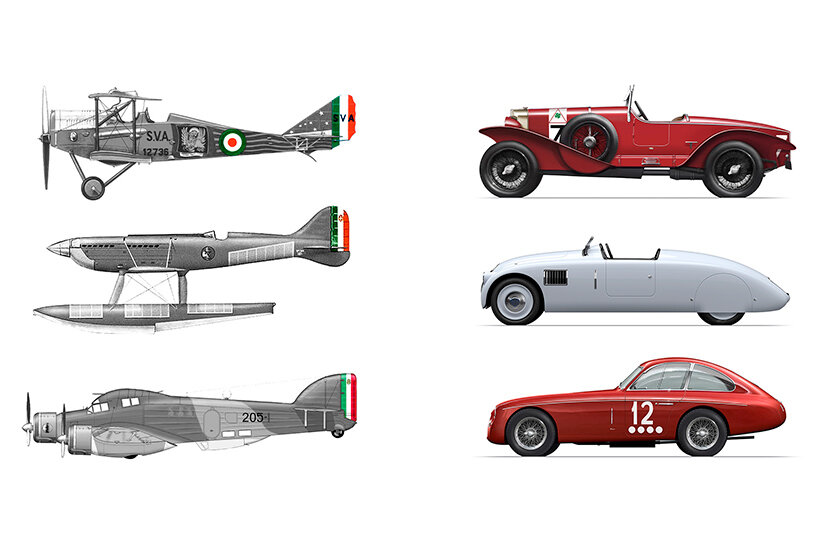 the coachbuilding company is informed by its aeronautical roots
the coachbuilding company is informed by its aeronautical roots
DB: Zagato is going to be expanding into the US and the UK. Could you speak about your goals of this expansion?
MRZ: Most of our greatest collectors are in the US. Our main markets have been, for the past hundred years, the US, Japan and the UK. These are very good markets, but because we are such a niche market, we are very limited. And in a way, we are still a family-run business. Andrea and I have always been a little bit ‘closed door.’ We don’t open our doors to the public. Now the objective with a new partner that is in the company as shareholders, we want to open a little bit more of our home, Casa Zagato, to a wider community. That’s why there is this project of the Domus, as we call it.
We sell works of art, unique pieces. So we don’t have dealers. We need the right person who tells a story. Because our cars are made of design, of ideas, of passion, and of a story. There is so much behind it, and we must be able to communicate that in order for people to really appreciate it. Today there are many beautiful things you look at. For example, with clothes, you might go in a store and only one thing might catch your eye — why? Maybe because of the quality of research on the materials or the details. It’s because of the idea and the purity, not because of the brand. The brand’s name could be almost nonexistent. We have a similar philosophy.
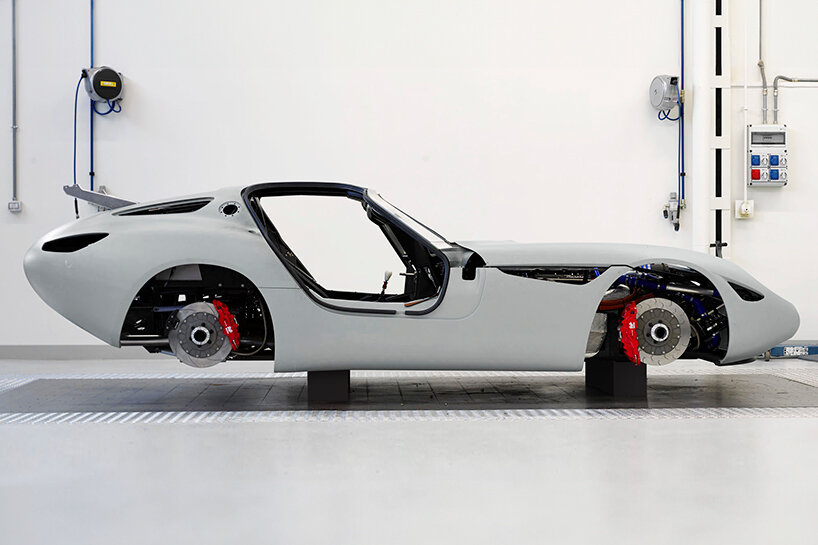
Zagato Maserati Mostro, transformation process
AZ: You could recognize the brand, but it’s not evident. The first thing we have done with Marella was to take off the name Zagatto. Because we said, ‘You have to know us. If you don’t know us, you don’t deserve this.’
MZ: We did this twenty-five years ago. We said, ‘If you don’t know who Zagato is, then you’re not our type of client!‘ (both laughing)
AZ: It’s a bit snobbish, but it worked. Every client was telling friends about the experience of coming to an Italian atelier in Milan, and the friends are coming. Then we decided to open up our market a little bit to newcomers, and so to enlarge to the Domus portfolio. We’re choosing twenty Domus all over the world that will act as a gateway, a portal to enter our history and our products. We replicate a gateway, the entrance to the company, from Tokyo to Greenwich, London, and Toronto and so on.
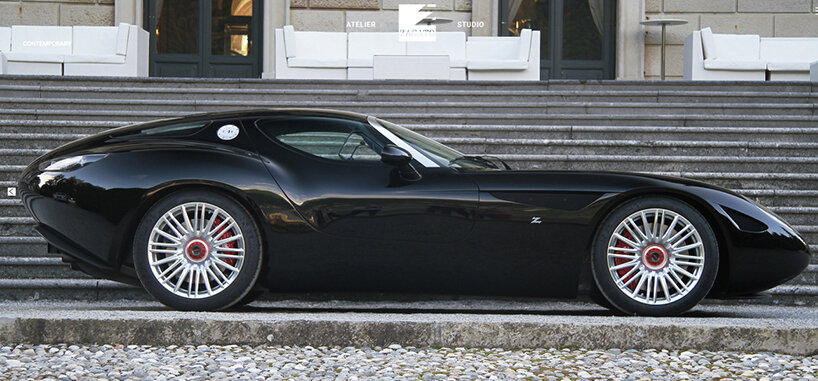
Zagato Maserati Mostro
DB: What is the meaning of Domus?
MRZ: It took us months to find the right word! It means portal — it’s a gateway to come into our world.
AZ: The Domus are based on luxury dealerships all over the world, but we have reversed the pyramid. Normally the manufacturer, with marketing, decides the product, then the product is pushed to the dealer who has to sell the product to the clients. Zagato was always a client-oriented company, not a marketing-oriented company. We have probably the best clients in the world — Enzo Ferrari, Lamborghini, and Maserati were all clients of ours. They, or the racing drivers, were suggesting the product to us, and we were making the product according to their suggestions.
We are trying to replicate this 105 year-old attitude by involving clients all over the world. The Domus will connect us with a group of clients, and they will be able to suggest our next type of project with which brand, and then we follow the suggestion. Practically, we reverse the pyramid with the bottom part, who’s suggesting, to the top. It is exactly the opposite of how the automotive industry works today.
